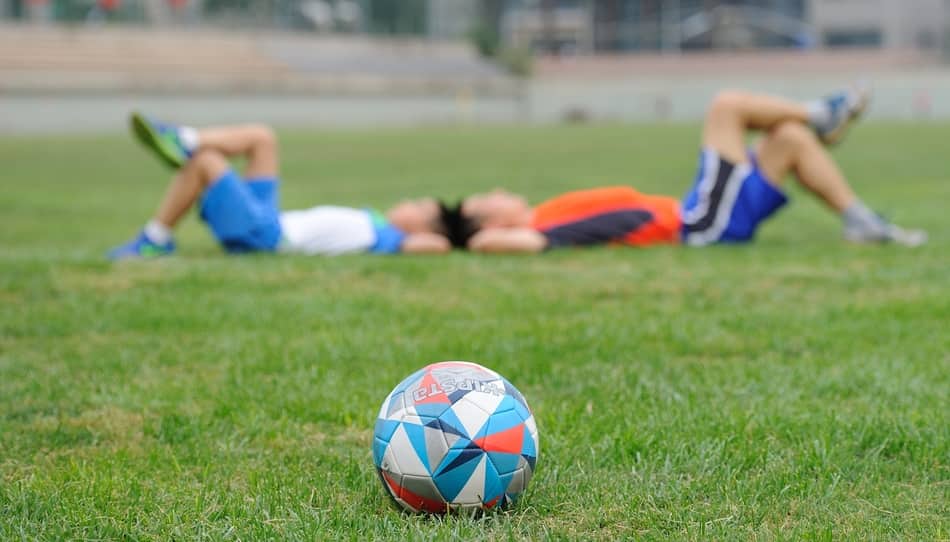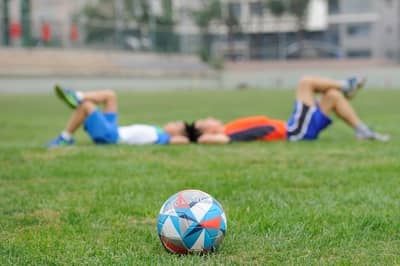
When kids start playing soccer, their coaches and parents are desperate of finding the ideal position for them. Picking a soccer position for kids is not a process that should be hurried. In fact, many soccer players don’t even have an established-unchangeable position.
So, when should kids pick a position? It is not a good idea to force kids to stay in one position for the rest of their soccer lives. However, around age 14-15, kids should have an IDEA of what area of the field they are most comfortable playing at: Goalkeeping, defense, midfield, offensive field.
Now, the idea you have at this age may stay or even change overtime. Surprisingly, there have been many pros that started playing in one area of the field, and ended in another one. In this article I’ll tell you 9 examples of recognized players to better illustrate what I am trying to say.
7-10 years old
Usually, most kids start playing soccer at 7 (I started at 3). When you are just learning to play the sport, the least important at this moment is picking a position.
At this age, it is most important for the kid to learn the fundamentals. Learn the technique of how to make a good pass, how to kick the ball correctly, mastering your ball control, etc. It doesn’t sound logic to pick a position at this age if you haven’t learned to play the game completely, right?
Additional, at this age, most of the academy’s teams from big pro clubs only play 7 vs 7 soccer/football. Real Madrid’s Benjamin A (10 year olds), still play this type of soccer. At this age, the game summarizes to being offensive or defensive.
It is best to wait a little more time to see the characteristics of each kid. To experience what they are good at and what they are not so good at.
At this moment, just let them have fun playing the beautiful game.
11-14 years
At this age, kids start playing 11 vs 11 full size soccer. This is a crucial moment in the child’s formation. It is when they start showing attributes towards a specific position. At this age, is when coaches usually start to try players out in the different positions.
It is recommendable that kids play in as many positions as possible. It is a huge mistake to make them be a defender since the beginning without trying them out as a midfielder or as forward too, because you don’t know how well they will they develop in the different positions.
This is the optimal age for kids to play all over the field and start making an IDEA of what they like to do most. Again, players actually never pick a specific position and stick with it forever. It is very probable that, with the past of the years, they change positions over and over again.
15 years old and after
15 years marks a before and after in the life of a young soccer player. At this age, most players already know a position they enjoy the most and feel more comfortable at. Also, it is not recommendable to change positions too often. It is better to practice more and start getting used to playing in an specific place in the field.
Not to say that they will not ever play in another position in their lives. Some of this things can happen and can become a major trigger to choose a determined position in the future:
By accident
You never know what can happen in a game. Maybe they show a red card to your team’s goalkeeper and there is no substitution. The coach calls you and he decides that you will be the goalkeeper for the rest of the game. You do a great job and, sooner than later, you will be the team’s goalkeeper.
The same can happen to any position in the field. Let’s pretend that a player plays as winger and the team needs a right back. Maybe the player has to make a sacrifice and cover the right back position, even though it is not the player’s natural position.
You never know what unexpected event can happen that will decide the future of a player’s soccer positioning.
Coach’s decision
Sometimes coach’s just want to try players to see how they perform in different positions, which is fine. This happened to me when I was 15. I always played as a right midfielder and winger, but suddenly the coach told me to play right back. I have never in my life played this position and was super scary to try it at a game. Fortunately, everything turned out great and I now love playing as a full back.
4 Basic areas of the field
When I said that at age 15, kids should have and idea of what area of the field they wanted to play at, I referred to this.
Goalkeeping
Most goalkeepers I have met are goalkeepers since always. They all say that they don’t even remember how they ended being goalkeepers or that the coach just put them under the goal the first time and they stayed there. Most kids don’t want to be goalkeepers, most just want to be forwards and score goals like their idols Messi and Ronaldo. When they grow up, they start liking to play in other places of the field.
Defense
This includes the Full back positions and the central defenders. I think kids don’t even fully understand what it means to defend until they are 9-10 years old. They always want to go to attack.
Usually kids that are defenders are assigned that position because they are big and not as fast as other players. However, they grow up to be great leaders of the team.
Midfield
Includes central midfielders, right and left midfielders, and defensive midfielders. These are like the evolved defenders that like to have the ball at their feet. Kids that play this position frequently have great ball control and technique.
Offensive field
Includes offensive midfielders, forwards, and wingers. At the beginning, most kids want to be the superstar that makes the goals. As they grow, they realize that not everyone can be offensive and they start to find other positions. In the following 9 cases from pros, you’ll see some examples.
9 cases from pros
To demonstrate that soccer players don’t ever have a definitive soccer position, and that, as a player, kids will evolve to a lot of different examples, here are 9 examples.
1. Lionel Messi
He started his career playing as center forward in 2006/2007. He was an 100% attacker and solely dedicated to making goals. He then evolved to become a playmaker midfielder. Messi played in front of Xavi and Iniesta and was more dedicated to creating goal opportunities more than just making the goals.
After that, he moved to a false nine setup to put passes to Neymar and Pedro. He started to commit a lot more defensively. Finally, right now Messi usually plays as right winger. Although, when Barcelona needs him, he is absolutely everywhere. When he is on fire, he plays every position basically.
2. Cristiano Ronaldo
I remember Cristiano in Manchester United back in 2006 playing as a right midfielder in a 4-4-2 scheme. When he moved to Real Madrid he usually played as a winger changing positions from left to right, playing wide and then going inside.
Now, Cristiano under Zidane has moved to a striker position as a pure 9, with the bad moment of Benzema and Bale. Sometimes he moves to the sides to get some space, but currently he is dedicating to make the goals with an offensive character, although he sacrifices a lot in defense too. A super complete player.
3. Gareth Bale
Bale used to wear the #3 because he played as a left back defender back in Tottenham. It was when he scored an incredible hat trick against Inter when they realized his full potential as an offensive player. He now plays as a winger and forward at Real Madrid.
4. Sergio Ramos
He always played as a right back defender but moved to central defender with Jose Mourinho. He is now one of the best, if not the best defender in the world.
5. Jaime Penedo
Penedo is my country’s national goalkeeper (Panama). I recently read his book where he tells the story of how he grew up to become a professional. It is funny because he mentions: “I don’t really remember how or when I became a goalkeeper, I suppose that the coach sent me to the goal one day and I stayed there”-he said.
He is one of the best goalkeepers in CONCACAF today.
6. Roman Torres
He is another player from my country, Panama. In an interview he was asked how he ended being a central defender and he answered:
“I was making the u-15 national team tryouts and I was a forward. The coach asked the forwards to raise their hands and there were too many! I decided not to raise it even though I was a forward; I didn’t stand a chance. He then ask the midfielders and they were a lot too. Then, with the defenders, few players raised their hands so I decided to raise mine’s even though I had never played as a defender. I stayed in that position ever since then”.
He will be Panama’s national team captain in the next FIFA World Cup Russia 2018 with Panama and made the decisive goal to qualify Panama for the first time to a world cup. Here is that iconic goal, of a player that never thought of becoming a defender.
7. Javier Mascherano
He always played as a central midfielder. In Barcelona, with legends like Iniesta and Xavi playing that position, he had to migrate to central defender.
8. Phillipe Lahm
He is a player that has played basically every position in the field. Pep Guardiola says that he is one of the most incredible players he has ever trained because of the great ability he has to play in so many positions.
9. Peter Cech
Before playing soccer he was a hockey goalkeeper. When he started playing soccer he was a forward of left winger. Sometimes, at training, he would be goalkeeper for short time to compare the size of the soccer goal with a hockey goal.
One day, the team had no goalkeeper to play a game. The coach asked who could be the goalkeeper, but no one really wanted to, so he sent Cech because he had seen him goalkeeping sometimes. After that, the rest is he history.
“I never thought being a goalkeeper” – he said.
Conclusion
Around 15 years old, kids should have an idea of what area of the field they want to play at (GK, defense, midfield, offensive field). Before that, it is better just to let them have fun and try as many positions as possible to see which one suits them best.
A soccer player is never permanent forever in a soccer position. As you saw from the examples above, players never know what position they will have to play in the future and how their soccer/football careers may change.

